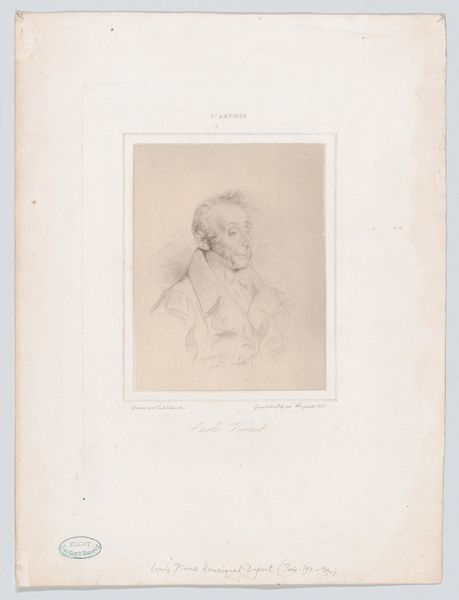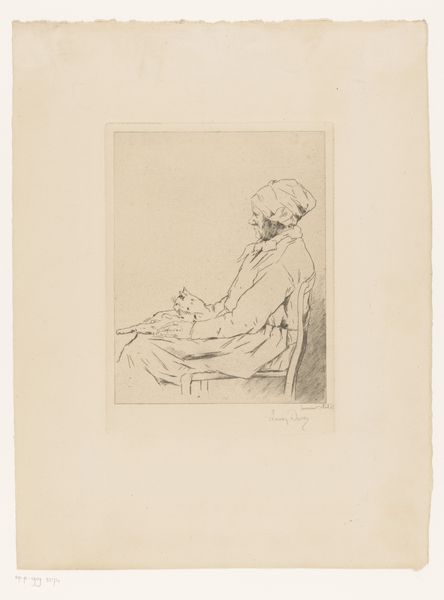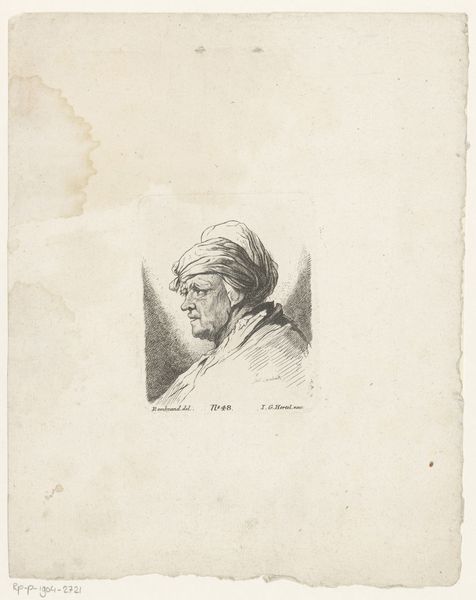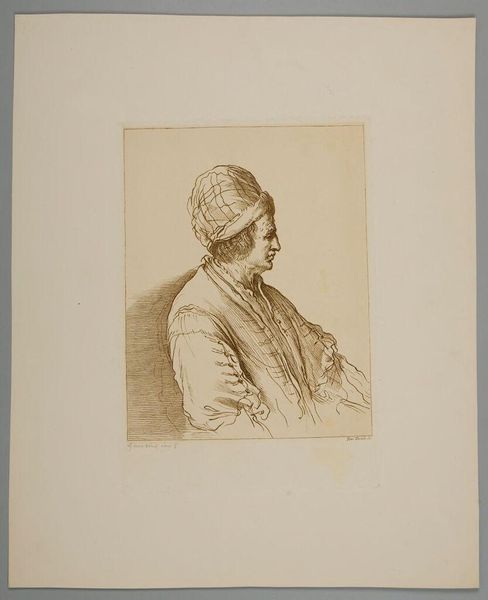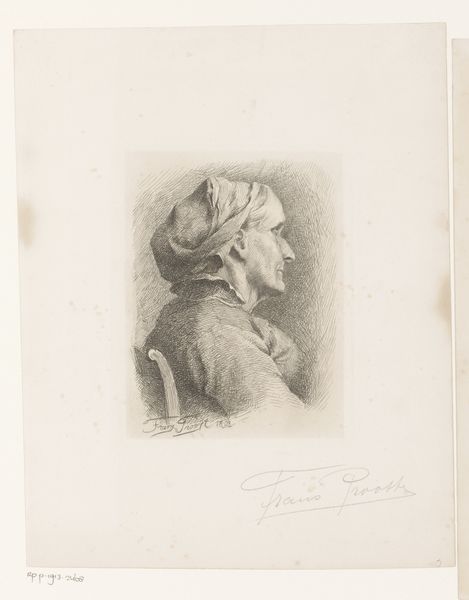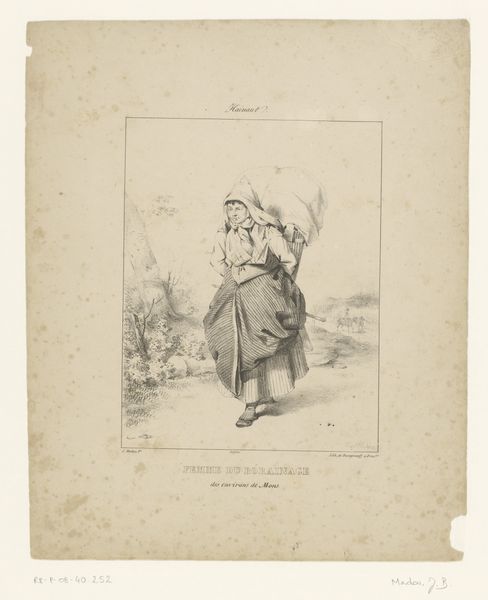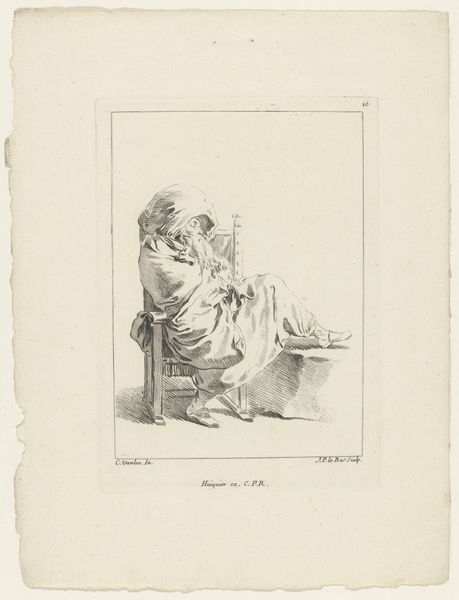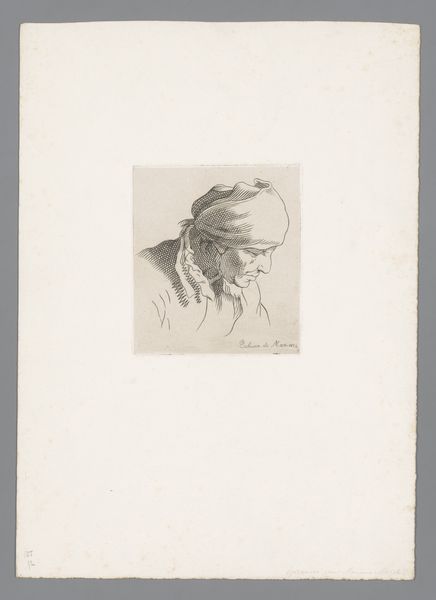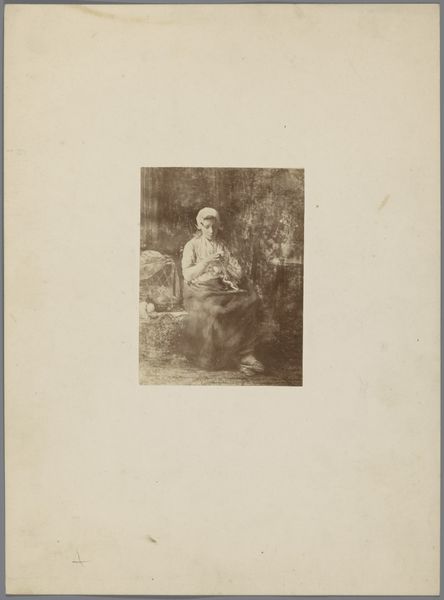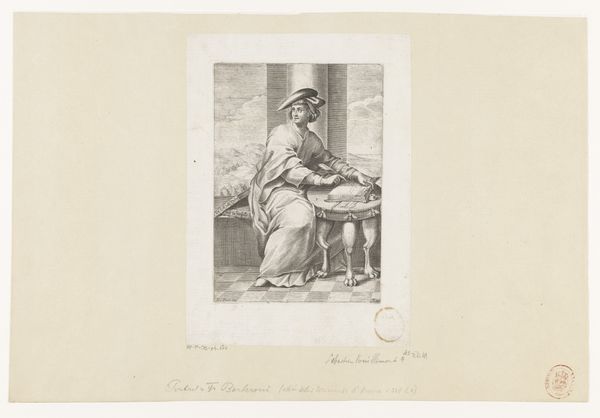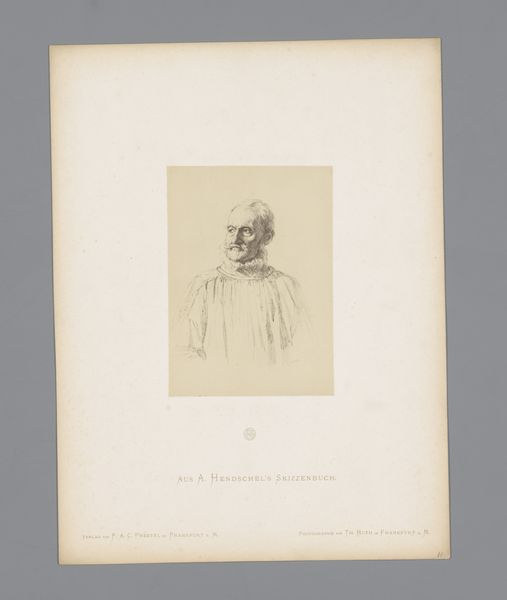
print, etching
#
portrait
# print
#
etching
#
genre-painting
#
realism
Dimensions: 7 3/4 × 5 1/16 in. (19.69 × 12.86 cm) (plate)13 11/16 × 9 15/16 in. (34.77 × 25.24 cm) (sheet)
Copyright: Public Domain
Curator: Théodule Ribot's etching, "A Great Sadness," created in 1868, presents us with an intimate glimpse into melancholy. It resides here at the Minneapolis Institute of Art. What’s your first impression? Editor: Stark. It’s almost painful to look at. The rawness of the etching… the way the lines capture such slumped posture, worn clothing, suggests a life beaten down. I’m thinking about the material realities embodied here: the cost of labor, the social conditions that might lead to such despair… Curator: Precisely. Ribot was deeply engaged in the Realist movement, seeking to portray life as it was, particularly the lives of the working class. Etchings like this, printed and disseminated, served as visual documents, engaging a broader public with social issues. He often focused on themes of working life and still life subjects, imbuing everyday objects and scenes with an intense, almost melancholic emotional depth. Editor: Right. I'm drawn to the visible labor in the making of this print, the clear demonstration of effort to create an affordable artwork for people who weren't typically involved in the arts. It’s about democratizing images, even somber ones, right? I'm wondering about who would be the public for such imagery, how these scenes of toil could shape class consciousness... Curator: Absolutely. Remember the period – post-revolution in France. The socio-political landscape was rapidly changing. Ribot presented these raw portraits, forcing viewers to confront realities often ignored by the Academy. In the late 1860s, there's increasing attention paid to genre painting that elevated regular people rather than only depicting noble characters. The bottles on the left serve to heighten our understanding of his circumstances. Editor: Yes, it serves to frame the sitter's world, highlighting the elements that contribute to their dejection and hopelessness. The rough table, dark and gloomy color, and heavy shadows show how life slowly grinds people to despair and poverty. It emphasizes the artist's technical abilities as well as his critical commentary. Curator: Ultimately, "A Great Sadness" is a potent reminder of art's power to reflect and influence social consciousness. Ribot gave a face and form to human suffering that's deeply affecting. Editor: For me, this piece underlines art's ability to expose, to make visible the otherwise invisible forces of social circumstance on individual lives, etched, quite literally, into history.
Comments
No comments
Be the first to comment and join the conversation on the ultimate creative platform.
